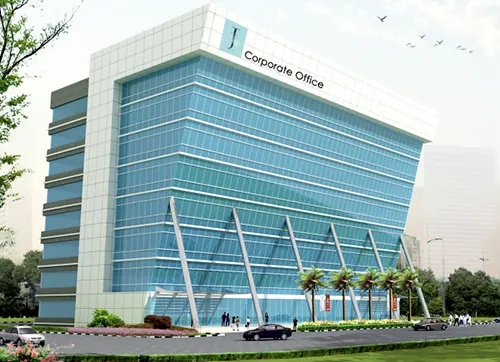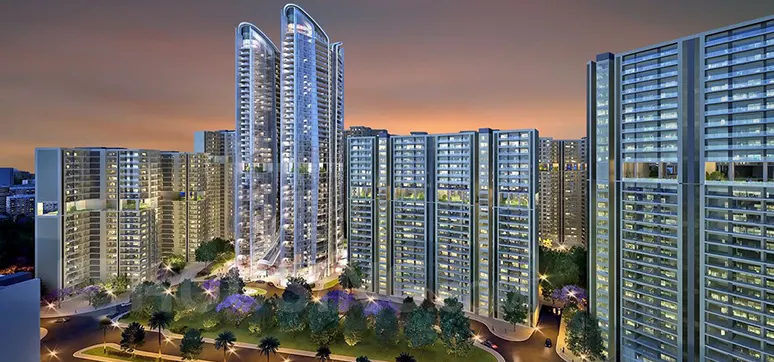According to you, what should be the approach for a solid fire-safe design considering the materials, design and technologies?
A solid fire-safe design should consider the following:
• Materials: Fire-resistant materials, such as concrete and steel, should be used in the construction of the building.
• Design: The building should be designed with fire-safety in mind, including the placement of fire exits and the use of fireproof walls and doors.
• Technologies: Fire detection and suppression systems, such as smoke detectors and sprinklers, should be installed throughout the building.
• In terms of facade and fenestration, it is important to use fire-resistant glazing materials and to design the fenestration in such a way that it does not compromise the fire resistance of the wall. Also, fire-resistant curtain walls and cladding systems should be considered to reduce the spread of fire.

What are the active and Passive fire protection systems/measures used in projects?
With respect to facade and fenestration:
Active fire protection measures:
1. Smoke control systems that can close vents, dampers and louvers to prevent smoke from entering the building.
2. Automatic fire shutters that can be activated by the fire alarm system to seal openings and prevent the spread of fire.
Passive fire protection measures:
1. Fire-resistant glazing that can slow the spread of fire and prevent the glass from breaking.
2. Fire-resistant curtain walls and cladding systems that can slow the spread of fire and reduce the amount of heat that enters the building.
3. Fireproofing of structural elements such as columns, beams and slabs in the facade.
4. Providing fire-rated window frames, sills, and lintels that can withstand high temperatures and prevent the spread of fire through the building envelope.
5. Fire-resistant seals around the perimeter of the fenestration to prevent the spread of fire and smoke through gaps.

It’s important to note that the selection of fire protection measures should be based on the specific requirements of the building, local building codes and regulations, and the results of a fire risk assessment.
What are the standard fire tests carried out to understand the behaviour of fire on the façade and fenestration systems?
Here are several standard fire tests that are typically carried out to understand the behaviour of fire on façade and fenestration systems. Some of the most common include:
• ASTM E119 or UL 263: These tests are used to determine the fire resistance of structural elements such as walls, floors, and roofs. The test involves exposing a sample of the material to high temperatures and measuring how long it takes for the material to fail.
• ASTM E2190: This test is used to determine the fire resistance of glazing materials. The test involves exposing a sample of the material to high temperatures and measuring how long it takes for the material to fail and allow flame to pass through.
• ASTM E2307: This test is used to determine the fire resistance of curtain walls, storefronts, and other exterior wall systems. The test involves exposing a sample of the material to high temperatures and measuring how long it takes for the material to fail and allow flame to pass through.
• BS 8414: This test is used to evaluate the fire performance of external cladding systems on buildings. It simulates the conditions of a full scale fire test using a 2-storey test rig and a fire exposure on the external face of the building.
• EN 1364-1: This test is used to evaluate the fire resistance of non-loadbearing elements such as partitions, doors, and glazing.
How do you ensure that the products recommended/used on the facades/ fenestrations are tested for resistance to fire?
• Check for certifications and approvals: Many fire-resistant products will have certifications or approvals from organizations such as Underwriters Laboratories (UL) or the National Fire Protection Association (NFPA) that indicate that the product has been tested and meets certain fire resistance standards.

• Review test reports and data: The manufacturers or suppliers of fire-resistant products should be able to provide test reports and data that demonstrate the product’s fire resistance. This may include information on the specific tests that were conducted, as well as the results of those tests.
• Request third-party testing: If there is doubt in the test reports provided by the manufacturer, it is possible to request an independent third-party testing to verify the fire resistance of the product.
• Conducting mock-up tests: It is also possible to conduct mock-up tests on-site before the final installation to ensure that the product is fit for its intended use.
• Consult with experts: Consult with fire protection engineers, architects or other experts who are experienced in fire-resistant design and can provide guidance on the selection of appropriate products and systems.
It is important to ensure that the products are tested under the same conditions and in the same configuration as they will be used in the building to get accurate results. Also, it is important to ensure that the product being used is compliant with the local building codes and regulations.
Tell us about the latest trends and technologies and materials which make a façade fire safe?

Some of the latest trends and technologies in making façade fire safe include:
• Smart fire protection systems: These systems use sensors and other technologies to detect and respond to fires in real-time, allowing for faster and more effective suppression of fires.
• Nanotechnology: Researchers are exploring the use of nanotechnology to create fire-resistant materials that are lightweight and more durable than traditional materials.
• Fire-resistant coatings: Researchers are developing new fire-resistant coatings that can be applied to existing buildings to improve their fire resistance.
• Fire-resistant glass & other cladding material: New glass technologies that can withstand high temperatures and slow the spread of fire are being developed.
• Prefabrication: Prefabrication of fire-resistant components such as fireproof walls, floors and doors can help speed up the construction process and reduce costs.
• Smart Façade: Smart façade systems are being developed that can respond to changes in the environment, such as heat or smoke, by adjusting the orientation of louvers or shutters to reduce the spread of fire.














